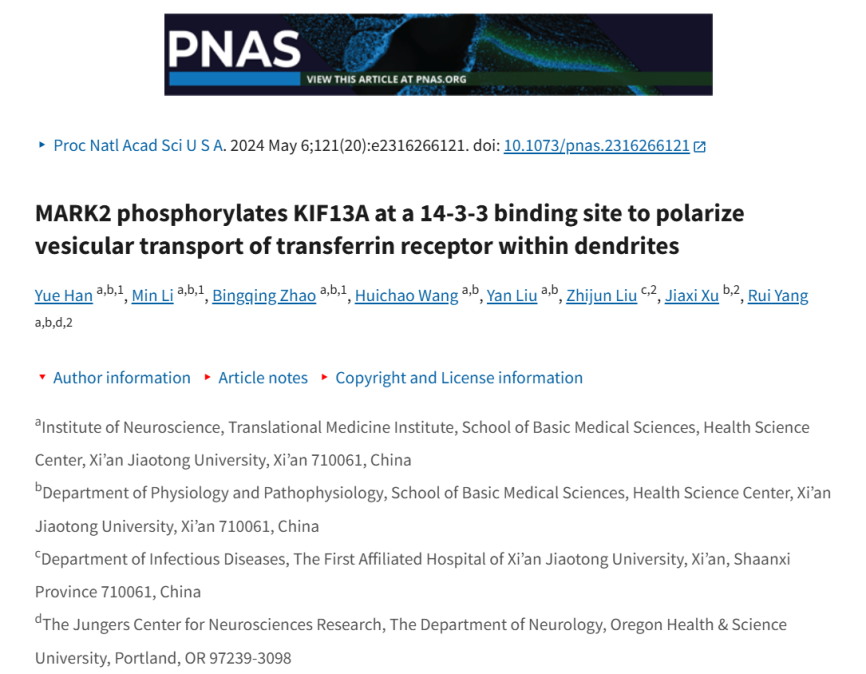Recently, Department of Infectious Diseases from the First Affiliated Hospital (FAH) of Xi'an Jiaotong University (XJTU) published a research article entitled “MARK2 phosphorylates KIF13A at a 14-3-3 binding site to polarize vesicular transport of transferrin receptor within dendrites” in Proceedings of the National Academy of Sciences (PNAS) (impact factor: 9.4), elucidating the important role of MARK2 in phosphorylating KIF13A via the mechanism of polarizing vesicular transport of transferrin receptor within dendrites. Department of Infectious Diseases of FAH is the co-corresponding affiliation. Professor Liu Zhijun from Department of Infectious Diseases of FAH is a co-corresponding author.

Neurons are highly-polarized cell types. Selective transport of neuronal materials to axons or dendrites based on vesicular transport is the basis for the formation and maintenance of neuronal polarization. Kinesin is the key dynein responsible for rapid transport of vesicles. However, how kinesin family members participate in the selective transport of neurons remains elusive. In this study, the unique mechanism underlying the role of kinase MARK2 in phosphorylating KIF13A was unraveled, enabling the transport of vesicles containing transferrin receptor (TfR) only to dendrites. Overexpressing KIF13A or MARK2 knockout in astrocytes and pyramidal neurons isolated from rat pups found that KIF13A was the main transporter of TfR-containing vesicles. When KIF13A trafficked TfR vesicles into AIS region, the kinase MARK2 accumulated in AIS region phosphorylated KIF13A at the 14-3-3 binding site, which strengthened the interaction between KIF13A and 14-3-3 and promoted the release of KIF13A from vesicles, thereby preventing vesicles from passing through AIS and entering the axons.
Professor Yang Rui from School of Basic Medical Sciences of XJTU is the first corresponding author. Professor Xu Jiaxi from Department of Physiology and Pathophysiology, School of Basic Medical Sciences of XJTU, and Professor Liu Zhijun from FAH are co-corresponding authors.